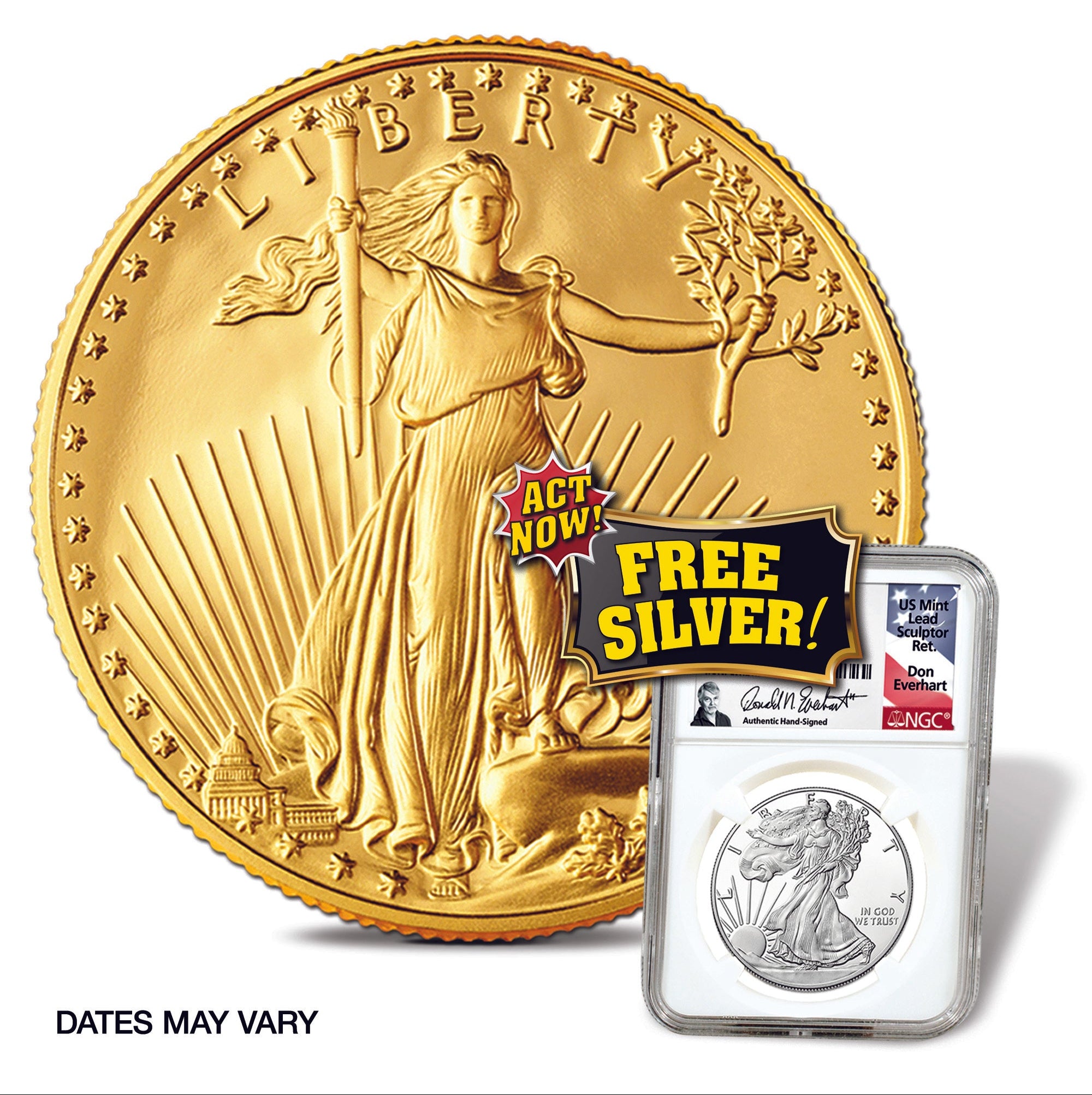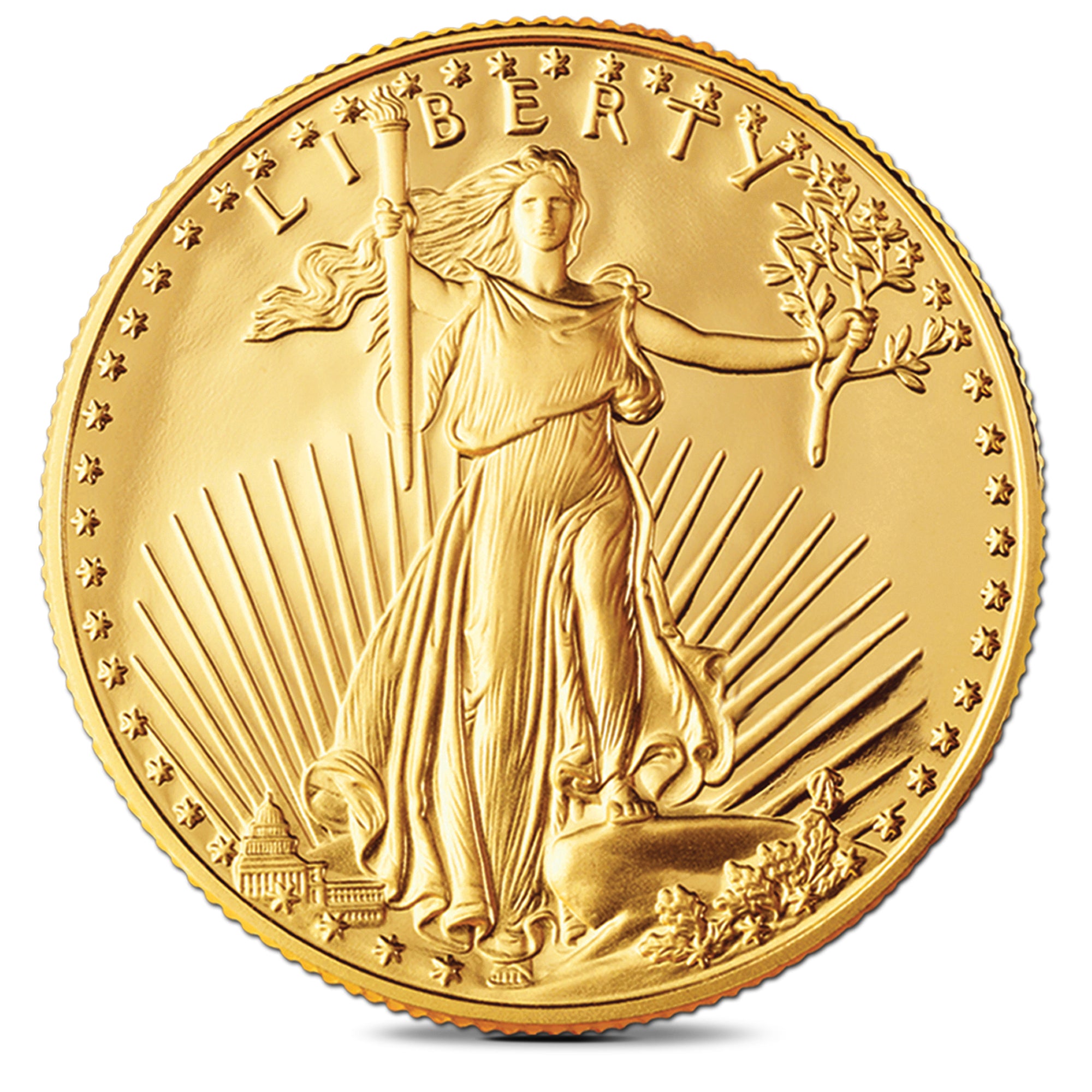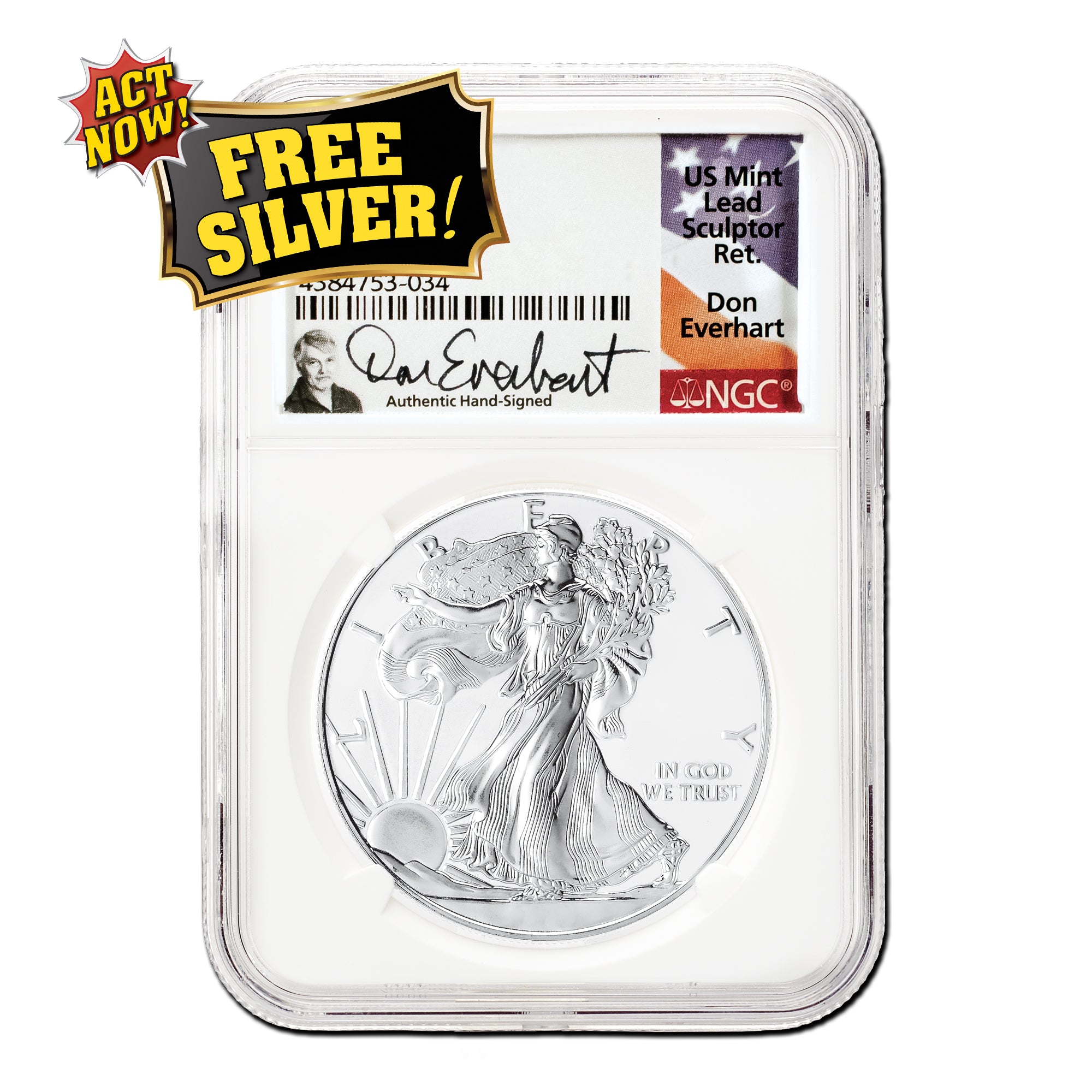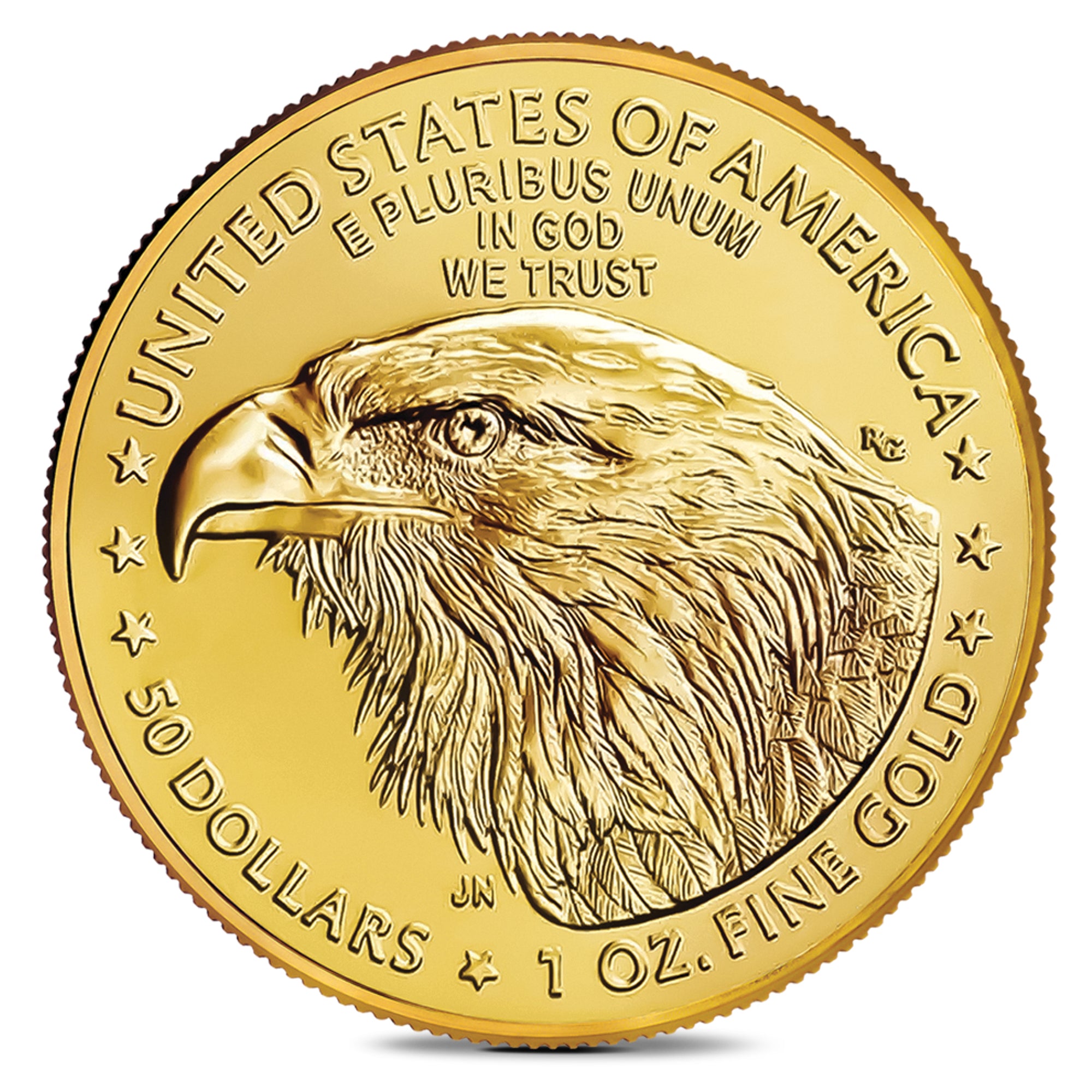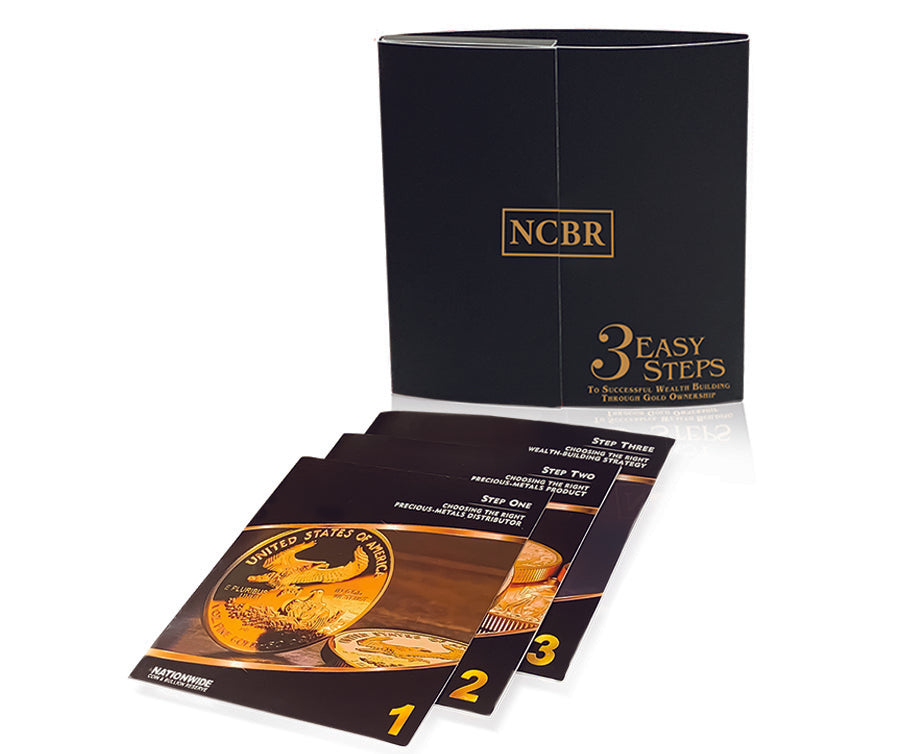The Gold American Eagle is the official gold bullion coin of the United States. Authorized under the Gold Bullion Coin Act of 1985, it was first released by the United States Mint in 1986.
The obverse design features a rendition of Augustus Saint-Gaudens' full-length figure of Lady Liberty with flowing hair, holding a torch in her right hand and an olive branch in her left, with the Capitol building in the left background.
The reverse features a portrayal of an eagle. Inscriptions are "UNITED STATES OF AMERICA," "E PLURIBUS UNUM," "IN GOD WE TRUST," "50 DOLLARS," and "1 OZ. FINE GOLD."
In times of economic uncertainty, where do you turn to protect your wealth, the stock markets, Crypto, the banks? What happens when the banking system itself is in crisis? It’s times like these that remind us of the enduring power of gold. Unlike paper money, gold has intrinsic value that cannot be inflated away by the government printing press. Protect yourself and your family with gold from Nationwide Coins today.
This special invitation is a once-in-a-lifetime offer. This offer is for first-time customers only. There is a strict limit of one coin, per household, per lifetime.
Why buy from Nationwide?
• Exclusive Offer (new customers only)
• 100% Satisfaction Guaranteed
• TrustPilot Rated Excellent
• BBB A+ Rated and Accredited
• Free shipping and insurance
